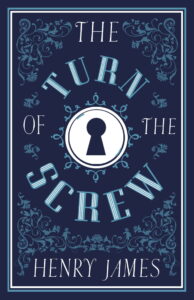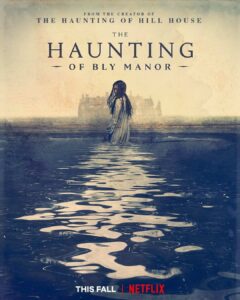by The Cowl Editor on October 29, 2020
Arts & Entertainment
by Grace O’Connor ’22 A&E Staff
The Haunting of Bly Manor is an intriguing new show perfect for the Halloween season. Mike Flanagan, the showrunner, based this show off of Henry James’s novella The Turn of the Screw. Released on Oct. 9, it comes two years after Flanagan’s previous show, The Haunting of Hill House, the first show in The Haunting anthology. Flanagan learned what did not work well in The Haunting of Hill House and used those lessons to create The Haunting of Bly Manor.

NPR stated, “The Haunting of Bly Manor creator and showrunner Flanagan seems to have absorbed the lessons of Hill House’s abiding flaw, and course-corrected. Without spoiling anything, I will say that Bly Manor nails the all-important dismount, and does so in a sincere, humane, and bittersweet way that directly addresses the nature, and the purpose, of grief. It’s not overtly tidy or dully expositional—yet it feels, in the best way, inevitable.” Flanagan worked to pursue a larger viewer base, using what worked well in the previous season to enhance the new installment.
As stated in an article in Elle, “Nobody who watched Netflix’s The Haunting of Hill House could ever forget The Bent-Neck Lady—or the array of terrifying hidden ghosts peppered throughout the show. But the follow-up season The Haunting of Bly Manor features a much bigger range of apparitions and scary visions, some of which are ghosts in the traditional sense, while others are a manifestation of trauma.” Rather than the premise of the show coming to light in the season finale, the reveal comes earlier. Other than this, the tangible feelings that come across in this new season are felt more by viewers because they are based on romantic relationships rather than the family at hand.
After a tragic death, a young woman finds herself caring for two children. The English estate in which they live is full of spirits, and the nanny realizes this soon after she arrives. The governess, Hannah, believes that the children can see the ghosts, too. She learns that the ghosts are her predecessors who were in love. KQED describes The Haunting of Hill House as being “filled with strong performances and unsettling images both overt (every episode came factory-installed with a jump scare) and subtle (showrunner Mike Flanagan packed the shadows in many shots with the barely perceptible ghost-faces—so if you were a chicken (hi!) who sensed a big scare coming and executed your go-to move of averting your eyes to stare into the bottom-left corner of the screen, you’d find a pale eyeless face staring back at you.” The thrillers add to the overall effect of the show and keep the viewers binge-watching.

The series was No. 1 on Netflix’s Top 10 list for a week straight, and, according to Forbes magazine, “seem[ed] to show no signs of letting up any time soon as other comers like Emily in Paris and the final season of Schitt’s Creek can’t catch it.”
This show emphasizes the connection between the spirits of the world. Flanagan claims the characters “all have a very dark edge to them. And by the end, it’s really hard to differentiate between tragedy with romance. That sense of romantic longing for someone who meant so much to us—but who’s gone—really is the heart of any ghost story.” This comment elucidates the authenticity that Flanagan emphasizes in The Haunting of Bly Manor. The show illustrates the raw feelings that accompany grief and the bond that love creates in a relationship.